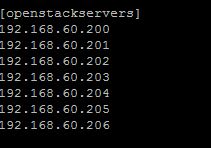When it comes to cloud technology, one of the biggest advantages a cloud brings is the ability to expand and retract on demand. This ability allows IT shops to meet the needs of customers and not miss revenue opportunities due to downtime, sluggish performance or overloaded server outages. This capability does not come without security concerns, since there is some data the IT shops will certainly not want leaving their firewall. For those cases, HP has a capability inside of CloudSytem known as local bursting (although announced in June, I must have missed that part of the announcement until last week at the HP Cloud Tech Day in Houston).
Local bursting is a fairly simple concept. The CloudSystem a customer is delivered is built larger than the customer needs or pays for, and the additional capacity is available to the customer to consume on a pay-per-use, utility basis. This is a very similar concept that has existed with HP SuperDome and Integrity lines (along with IBM’s OnDemand strategy) for a long time, but its now being applied to cloud technology. But this concept allows for a customer to have additional local resources to consume without the need for additional capital expenses.
In addition to local bursting, HP is working to make a network of service providers that are compatible with CloudSystem through its CloudAgile service provider program. These partners will include lots of different cloud providers and customers are not locked into a specific technology, such a vCloud, to choose from. Savvis is a current HP CloudAgile partner, but others mentioned include SHI and Verizon (who is a vCloud provider). HP has reiterated on several occasions that it is seeking to create an open cloud architecture which can interoperate with multiple and varied third party cloud providers.
Since bursting is one of the more promising concepts within the cloud and we took some time last week to talk about some use cases that would benefit from bursting:
- School photographers have a large spike in traffic during ‘yearbook’ season when they handle the majority of their business.
- College registration produces a peak amount of traffic for schools trying to get students into their desired classes for the coming semester.
- Rendering farms for movies would also be a good use case, because the majority of the time, render farms are not processing on a movie – it is only really required during large render sessions.
- Scholastic testing is also another seasons activity when users needs must be met and performance is key, but which outside of the season is not nearly as great of a computing load.
- Black Friday for ANY retail e-commerce vendor.
But there was one concept which also came up in our bursting conversations – and its an interesting one I’d like to reiterate here – and it is the issue of capacity with service providers. Bursting and service providers are a new frontier for many companies, so knowing who can and cannot handle our capacity and needs is an interesting concept to think about. I would think most service providers are not going to advertise their exact capacity (or lack of) for competitive reasons. So, in those cases, how does a customer gauge whether or not a service provider can handle their workload? Its a good question and I don’t have the answer, but I would love to hear what readers think. One interesting point, is that because HP’s CloudSystem is multi-vendor public cloud, if one vendor cannot handle your load, customers have choice to move to another provider. While this exists for VMware vCloud providers, too, HP is working so that customers can choose from non-vCloud providers as well.


